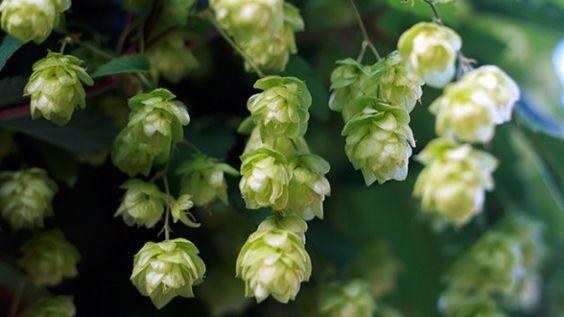
Did you know the name? How is it grown? Its uses, function and relevance?
I'm sure it will interest you to discover something new about this beautiful home grown plant.
This plant is known as the hop plant Humulus lupulus. It is also called seed cones or strobiles. Hops are the flowers of the plant and it is a member of the Cannabaceae family of flowering plants.
Planting hops needs careful preparation of the environment and resources that will support its growth because hops can last for over 50 years in a good environment.
Hops need a strong trellis system for the bines (the technical term for hops’ “vines”) to climb on. Bines can grow to over 25 feet and weigh over 20 pounds. Also, the soil to plant it needs to be loose (well-aerated by turning over several times). It should also be well-draining; hops don’t like to have consistently wet roots and adding aged manure or compost to the soil before planting is important. Interestingly,you can plant hops in your garden at home.
When is it most appropriate to Plant hops? In spring after the last frost. It discovered that Hops need a minimum of 120 frost-free days to flower and produce a good crop. During the first year, the plant is establishing its root system and only a few flowers are produced. In the second year, the plant will produce a normal crop of hops.
In the home garden, hops are best planted in hills. Space the hills at least 3 feet apart. In large-scale operations, they are often grown in rows and allowed to twine up wires. Plant two rhizomes per hill with the buds pointing up and the roots of the rhizome down. Dig a hole that’s about twice as wide as the pot and as deep.
Place the plant in the hole and backfill. Be sure to plant the hops plant no deeper than it was in its pot.
Water deeply at the time of planting.
Cover the hills with some straw or light mulch to control weeds.
The benefits of these beautiful hops plants are numerous. After use, hops are discovered to be helpful as sedatives, and are used to treat insomnia, depressive symptoms, nervous tension, and anxiety. Hops (Barley) can also strengthen the spleen, aid the gallbladder, and detoxify.” It should be noted that these effects were shown in research studies using concentrated hops, not beer.
Also hops are used as a bittering, flavoring, and stability agent in beer, to which, in addition to bitterness, they impart floral, fruity, or citrus flavors and aromas. Hops are also used for various purposes in other beverages and herbal medicine.
In addition to beer, hops are used in herb teas and in soft drinks. These soft drinks include Julmust (a carbonated beverage similar to soda that is popular in Sweden during December), Malta (a Latin American soft drink) and kvass.
Hops can be eaten; the young shoots of the bine are edible and can be cooked like asparagus.
Hops may be used in herbal medicine in a way similar to valerian, as a treatment for anxiety, restlessness, and insomnia. A pillow filled with hops is a popular folk remedy for sleeplessness, and animal research has shown a sedative effect. The relaxing effect of hops may be due, in part, to the specific degradation product from alpha acids, 2-methyl-3-buten-2-ol, as demonstrated from nighttime consumption of non-alcoholic beer.
2-methyl-3-buten-2-ol is structurally similar to tert-amyl alcohol which was historically used as an anesthetic. Hops tend to be unstable when exposed to light or air and lose their potency after a few months' storage.
Hops are of interest for hormone replacement therapy and are under basic research for potential relief of menstruation-related problems.
You do not necessarily need to keep planting new hops every time, all you will do is that: at the end of the season, bury a few healthy bottom bines in the soil for propagating new plants in the following spring.
Bury the bines in a shallow trench and mark their location.
In spring, dig up the bines and cut them into pieces about 4 inches long. Make sure each new cutting has an eye or bud.
Plant the cuttings in hills.
Knowing when to harvest hop and how to store it is essential if you must enjoy the plant. Harvest hops at the end of the growing season—usually late summer.
Squeeze the flower cones to see if they have started to dry out. Let the bines dry on the support system or cut them down and lay them down on the ground to dry before pulling off the cones.
Finish drying the cones on screens in the sun or in a well ventilated room.
For the freshest flavor, store the dried cones in airtight containers or vacuum-sealed bags in the freezer or refrigerator until ready to use.
If you enjoyed reading this, you may enjoy our article about rye.
Join our community network events and meet like-minded people.
Help sustain Our Food Systems.